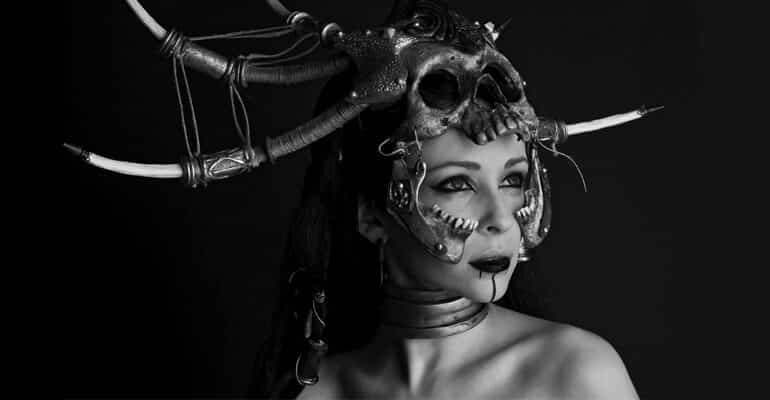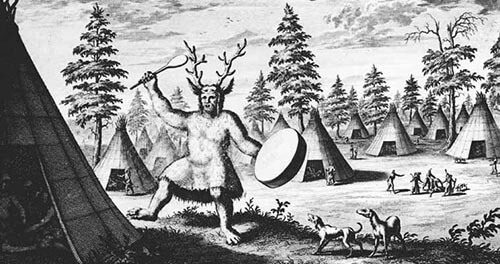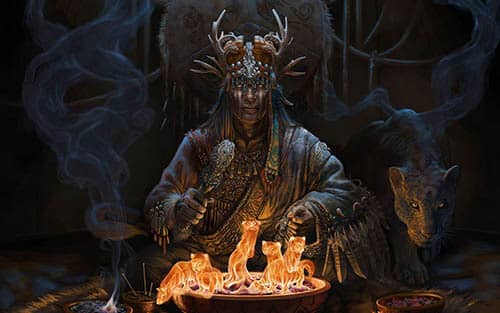
We’ve been working hard to create the best UFO, Alien & Paranormal stories for several years now and we’re excited to share that we just recently launched our youtube channel. We’re releasing one new alien, ufo video each day. Make sure to head over to the UfoHolic youtube channel, subscribe and tap the bell in the top right for notifications to see new videos when they come out. Subscribe to our Ufo videos by clicking here.
One of the key figures of the ancient worlds was the shaman. As enigmatic today as they were thousands of years ago, these mystic practitioners were said to possess magic powers that helped shape the first human societies.
Today, the word “shamanism” is often used in a generalized way to illustrate a lot of indigenous magical rituals in a wide range of cultures all across the world. Modern books can be found about a so-called “Celtic shamanism” and even “Ancient Egyptian shamanism”, also modern writers such as Dr. Michael Harner have also created what is called “core shamanism” or “urban shamanism”.
These actions takes the aspect of shamanic beliefs and rituals and puts them in a safe, clean and often around the topic form that is adequate for Western seekers of alternative spirituality. In this article, however, we explore the real “core shamanism” as it has been practiced for hundreds of years in Siberia and some areas of Mongolia from where it originates.
The earliest references to magical users that could be described as shamans date back to the 13th century. Back then, the first Western travelers passed through Central Asia and discovered the Mongol rulers. Marco Polo the explorer met magicians who were healers and could tell diseases by the use of divination. Polo says the shamans became possessed by what he described as “a devil” who used his voice to speak through them.
In the 16th century, an English explorer called Richard Johnston was the first to describe a shaman ritual. He proclaimed witnessing a tribal man wearing animal skins and playing a drum “shaped like a great sieve” in “devilish rites”. He then claimed that during the rite, the drummer fell under a spell and was possessed by “evil spirits”.
Nicholas Witsen is another Western explorer who in 1692 traveled to Asia and described seeing a shaman or “priest of the Devil”. He was clothed in a ritual regalia, formed of an antlered head-dress and a richly emblazoned robe, and shouted and beat on a drum to call the spirits. Reflecting the Catholic culture they came from, these Westerners thought of themselves as civilized and regarded the shamans as fantastical men who worship the devil and forced their naive and uneducated disciples to serve evil spirits and demons.
Although Westerners utilize the term “shaman” to describe every tribal magical practitioners, in reality they were divided into several different categories with specific magical powers and duties. These consisted of “conjurers” who summoned and controlled spirits, sorcerers who studied black magic, prophets who foretold the future, trance-workers who could travel in spirit form to other worlds, healers who could treat injury and were experts in folk medicine and herbalism, and shamans who guided the dead and conducted funeral rites.
Most of the shamans worked with animal allies or spirit-helpers in animal form. These spirits helped them with their magical work and also offered them knowledge. For instance, shamanic practitioners were guided by a reindeer or wolves who helped them track and destroy evil spirits, and ravens for getting rid of sickness. Other animal spirits took the form of owls, bears, squirrels, frogs, dogs, toads, seagulls and eagles.
One of the most meaningful and appreciated types of magical practitioners was the shaman-smith. Cultures all over the world from Europe to Africa give the smith a central role in tribal society. It was regarded as a powerful sorcerer because of his mastery over fire and ability in shaping metal. There are many myths about blacksmiths making deals with demons, gods or ancient beings. There are also many smith gods in old legends who were mages, made weapons for the Gods or invented agricultural tools. The original Siberian shaman-smiths made ritual objects of great power, imbued afterwards with magical properties that served other shamans or warriors of the tribe. They were only named by the spirits and instead of drums, they used their anvils to connect and interact with the spiritual realm.
Men weren’t the only ones allowed to become shamans, as women had a key role in maintaining a tribe’s prosperity and bloodline. The females were often shaman-healers, as they specialized in health problems regarding children, as well as human and animal fertility. The she-shamans were distinguished by their different skirts made from animal hide and luminously colored hats made from wool.
Another female specialist was the shaman-midwife. She was tasked with the spiritual protection from evil spirits during birth and also with ensuring that babies arrived safely to this world. Right after a child was born, the shaman-midwife cut the umbilical cord and afterwards purified the new-born with salt water and fire. Throughout the first weeks of a baby’s life, she conducted the proper ritual for shielding the child until his spirit was fully settled in the material world. If these rituals were not performed accordingly, then the baby’s spirit might return from where it had come.
In present days, society has turned its head away from spiritual belief and cosmic knowledge. The new world that humans have created is linked to material gain and soulless objects rather than understanding human needs and preserving life. We are currently controlled and restricted in our way of living and thinking. Information might seem easy to come by but most of the time it’s not truly authentic. this begs the question: are we still able to access the spirit realm from our concrete world, like shamans once did?













good article, respect